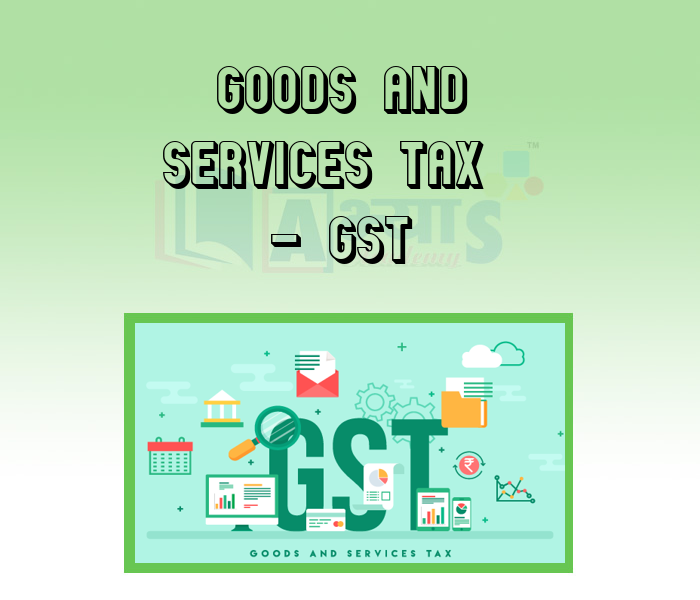Goods And Services Tax - GST


Goods And Services Tax - GST
Goods And Services Tax:
What is GST?The GST is basically an indirect tax that brings most of the taxes imposed on most goods and services, on manufacture, sale and consumption of goods and services under a single domain at the national level. In the present system, taxes are levied separately on goods and services. The GST is a consolidated tax based on a uniform rate of tax fixed for both goods and services and it is payable at the final point of consumption. At each stage of sale or purchase, in the supply chain, this tax is collected on value-added goods and services, through a tax credit mechanism.
The Proposed Model of GST and the RatesA dual GST system is planned to be implemented in India as proposed by the Empowered Committee under which the GST will be divided into two parts:
State Goods and Services Tax (SGST)
Central Goods and Services Tax (CGST)
Both SGST and CGST will be levied on the taxable value of a transaction. All goods and services, leaving aside a few, will be brought into the GST and there will be no difference between goods and services. The GST system will combine Central Excise Duty, Additional Excise Duty, Services Tax, State VAT or Entertainment Tax etc. under oe banner.
The GST rate is expected to be around 14-16 per cent. After the combined GST rate is fixed, the States and the Centre will decide on the SGST and CGST rates.Presently, there are arouond 160 countries that have implemented the GST or VAT in some form or the other, France was the first country to introduce GST. The only other country with a dual GST is Canada.
How is GST applied? GST is a consumption based tax/levy. It is based on the "Destination Principle". GST is applied on goods and services at the place where final/actual consumption happens.
GST is collected on value-added goods and services at each stage of sale or purchase in the supply chain.
GST paid on the procurement of goods and services can be set off against that payable on the supply of goods or services. The manufacturer, wholesaler or retailer will apy the applicable GST rate but will clain back through tax credit mechanism.
But, being the last person in the supply chain, the end consumer has to bear this tax and so, in many respects, GST is like a last-point retail tax. GST is going to be collected at point of Sale.
Students / Parents Reviews [10]
One of the best institutes to develope a child interest in studies.Provides SST and English knowledge also unlike other institutes. Teachers are co operative and friendly online tests andPPT develope practical knowledge also.

Aman Kumar Shrivastava
10thIt was good as the experience because as we had come here we had been improved in a such envirnment created here.Extra is taught which is beneficial for future.

Eshan Arora
8thI have spent a wonderful time in Abhyas academy. It has made my reasoning more apt, English more stronger and Maths an interesting subject for me. It has given me a habbit of self studying

Yatharthi Sharma
10thIt was a good experience with Abhyas Academy. I even faced problems in starting but slowly and steadily overcomed. Especially reasoning classes helped me a lot.

Cheshta
10thIt has a great methodology. Students here can get analysis to their test quickly.We can learn easily through PPTs and the testing methods are good. We know that where we have to practice

Barkha Arora
10thAbhyas Methodology is very good. It is based on according to student and each child manages accordingly to its properly. Methodology has improved the abilities of students to shine them in future.

Manish Kumar
10thMy experience with Abhyas academy is very good. I did not think that my every subject coming here will be so strong. The main thing is that the online tests had made me learn here more things.

Hiya Gupta
8thMy experience with Abhyas is very good. I have learnt many things here like vedic maths and reasoning also. Teachers here first take our doubts and then there are assignments to verify our weak points.

Shivam Rana
7thAbout Abhyas metholodology the teachers are very nice and hardworking toward students.The Centre Head Mrs Anu Sethi is also a brilliant teacher.Abhyas has taught me how to overcome problems and has always taken my doubts and suppoeted me.

Shreya Shrivastava
8thAbhyas is a complete education Institute. Here extreme care is taken by teacher with the help of regular exam. Extra classes also conducted by the institute, if the student is weak.
